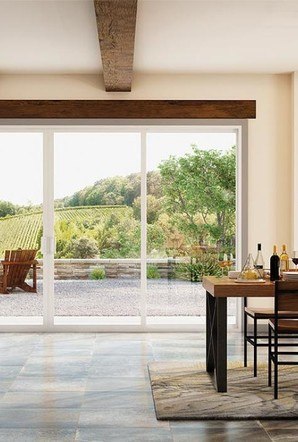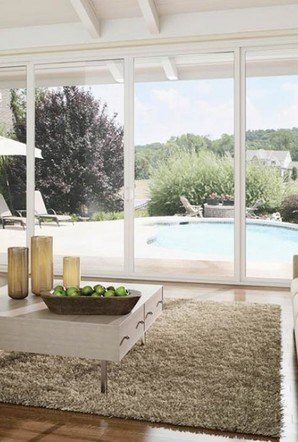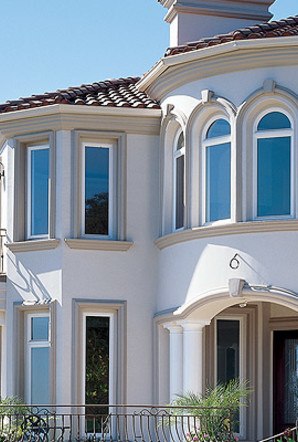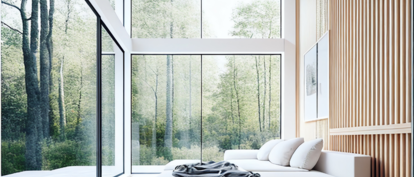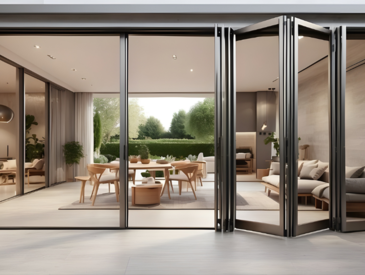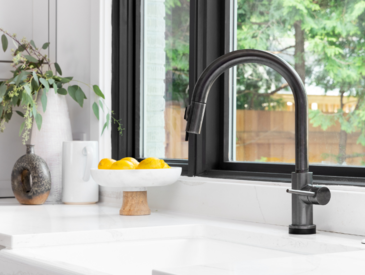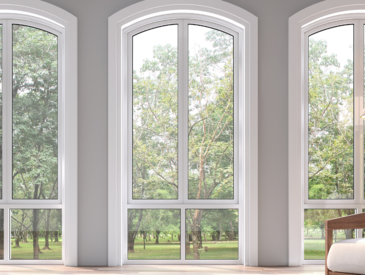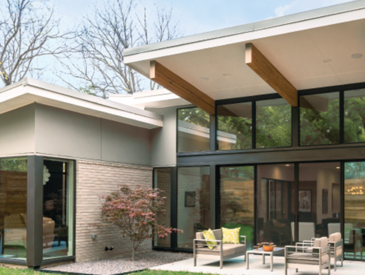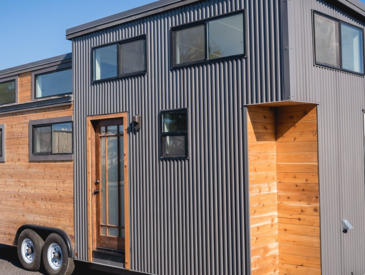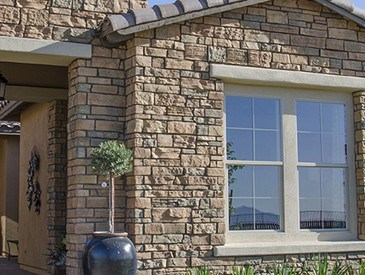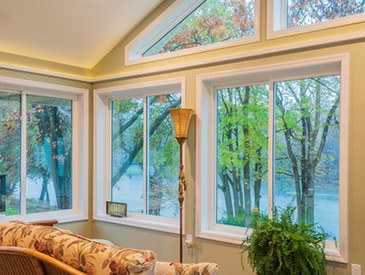Floor-to-ceiling windows not only flood your home with natural light but also offer stunning, uninterrupted views, connecting indoor spaces with the outside world. If you’re considering adding this breathtaking feature to your home, read this article first. Whether you’re renovating or building new, we’ll cover how to select the best operating style, window treatments, and materials for your project.
What Are Floor-to-Ceiling Windows?
Floor-to-ceiling windows, also known as full-length windows, are large windows that span the entire height of a room from the floor to the ceiling. They’re designed to maximize natural light and offer expansive views of the surrounding environment. These windows are popular in modern architecture because they create a seamless connection between indoor and outdoor spaces, making rooms feel larger and more open.
Why a House With Large Windows Tends to Sell for More
One of the biggest benefits of floor-to-ceiling windows is that they can attract more interest and command higher prices in the real estate market. Houses with large glass windows often sell for more because they can add the following to a home:
- Aesthetic appeal: Houses with lots of windows have a striking visual impact that greatly increases a home’s curb appeal. They give a property a contemporary edge that can be visually stunning both from the inside and the outside.
- Perceived luxury: Floor-to-ceiling windows are often seen in high-end architecture and design magazines, reinforcing their association with upscale, luxurious living. This perception can increase a home’s marketability and value.
- Unique selling point: Floor-to-ceiling windows can set a home apart from others in the area. Homes that feature distinctive architectural elements tend to capture more interest, which can translate into higher selling prices.
- Sustainability: Modern floor-to-ceiling windows are designed with energy-efficient materials and coatings. Energy-efficient homes can attract a premium in today’s market where sustainability is increasingly valued.
More Benefits of Floor-to-Ceiling Windows
Increasing your home’s value isn’t the only benefit of floor-to-ceiling windows. Even if you’re not thinking of selling your home, big windows can make your space more enjoyable and functional with:
- Natural light: These windows allow an abundance of natural light to flood the rooms, which can help make spaces feel larger and more open. Natural light is also good for your mental and physical health, improving mood and reducing the need for artificial lighting.
- Better views: Enjoy beautiful landscapes or cityscapes from the comfort of your home. Floor-to-ceiling windows provide expansive views of the outdoors, which is especially valuable in homes with scenic surroundings.
- Indoor-outdoor flow: Improve the connection between indoor and outdoor spaces, especially when you include folding or sliding doors. This is a big benefit in regions where you want to enjoy the outdoors year-round.
- Improved ventilation: When operable, floor-to-ceiling windows can offer excellent ventilation, allowing fresh air to circulate throughout the home and improving air quality and comfort.
Types of Floor-to-Ceiling Windows
Floor-length windows come in various styles and configurations, each offering unique benefits and aesthetic appeal. Let’s go over some of the common operating styles for this type of window.
Fixed Floor-to-Ceiling Windows
Fixed floor-to-ceiling windows, also called picture windows, are non-operable, meaning they don't open or close. Since they have no mechanical components, fixed windows often offer better insulation than their operable counterparts. They’re ideal for areas where you don’t need ventilation and you want to maximize the view and sunlight.
Sliding Floor-to-Ceiling Windows
Sliding floor-to-ceiling windows consist of one or more panels that slide horizontally over each other to open and close. This design uses less space because it doesn't require any interior or exterior space for swinging open. Sliding windows provide excellent ventilation and unobstructed views, making them a popular choice for modern homes that emphasize an indoor-outdoor living approach.
Specialty Floor-to-Ceiling Windows
Incorporating transom or radius windows above more standard shapes can create captivating floor-to-ceiling designs. These arched windows have a visual impact and add architectural interest and height, creating a focal point in both the exterior facade and interior space. They also bring more light into the room than standard windows alone.
Bifold Floor-to-Ceiling Windows
Bifold or folding floor-to-ceiling windows consist of multiple panels that fold against each other and smoothly stack to one or both sides of the frame. This type of window is perfect for opening up an entire wall to blend outdoor and indoor spaces seamlessly. Bifold windows are popular in homes with patios or decks, because they can make the transition between interior and exterior environments virtually invisible.
Pocket Glass Walls
Pocket glass walls are floor-to-ceiling sliding panels that retract completely into a wall compartment, opening up entire walls for seamless indoor-outdoor transitions and great views. With a sleek, modern design and high-performance glazing, they’re a popular style for floor-to-ceiling sunroom windows and spaces designed for lavish entertaining.
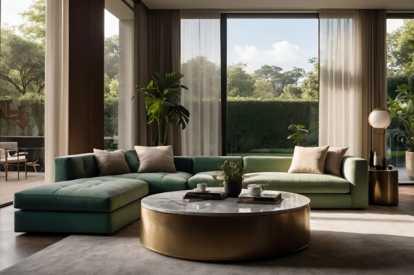
Window Treatments for Floor-to-Ceiling Windows
The best window treatment for your floor-length windows depends on the style of your home and your personal preferences. Here are some of the most popular options.
Motorized Shades
Big windows means big window treatments, but you don’t want to spend all day opening and closing the shades. Motorized shades are a popular choice for wall-to-wall windows because they can be controlled with a remote, a smartphone app, or even integrated into smart home systems. They’re convenient and modern, and they come in a variety of materials and opacities to match any interior design.
Sheer Curtains
Sheer curtains offer a light, airy feel that doesn't obstruct views but still softens incoming sunlight and provides a degree of privacy. They’re perfect for maintaining an open and bright atmosphere while diffusing direct sunlight to prevent glare and protect interiors from UV damage.
Blackout Curtains
If you want more light control on your floor-to-ceiling windows, blackout curtains are ideal. They provide complete privacy and are excellent for blocking out light, which is ideal if your space has multiple uses, for example, a living room that serves as an entertaining space and also a theater for family movie night. Blackout curtains can also help insulate the room, reducing energy costs.
Roller Shades
Roller shades offer a sleek and simple aesthetic that works well with modern decor. They come in various transparencies from sheer to opaque, providing flexibility in light control and privacy. Roller shades can be custom fitted for full-length windows, ensuring a clean and tailored appearance.
Vertical Blinds
Vertical blinds are another functional option for floor-to-ceiling windows. They allow you to easily adjust light levels and views with their tilt and stack functions. Vertical blinds are available in a wide range of materials and styles, making them adaptable to different decor. Plus, they’re one of the most affordable window treatment options.
Solar Shades
Solar shades are designed to block UV rays and reduce glare. They help maintain cooler indoor temperatures and protect furniture from sun damage without sacrificing the view. They’re ideal for windows that receive a lot of sunlight and where solar heat gain is a concern, for example, floor-to-ceiling sunroom windows.
How Much Do Floor-to-Ceiling Windows Cost?
The cost of floor-to-ceiling windows varies widely based on size, glass type, frame material, and installation complexity. Prices typically range from $700 to $1,600 per linear foot for standard options. High-end features like energy-efficient glass or automated shades can increase costs. Installation expenses also vary depending on the job's complexity and geographic area. Homeowners typically want to get multiple quotes to find the best deal.
Are Floor-to-Ceiling Windows Right for Your Home?
Window installation can be a big project, especially for something like floor-to-ceiling windows. Think about the following as you plan your windows.
Architectural Style
You’ll generally want your house’s windows to complement its architectural style, so consider how they’ll integrate into the overall aesthetic. Floor-to-ceiling windows are most often seen in modern and contemporary architecture, where they complement the clean lines and open designs typical of these styles. However, with the right framing and window treatments, they can be adapted to more traditional homes.
Local Climate
The climate in your area plays an important role in the features you’ll need in floor-to-ceiling windows. In regions with extreme temperatures, whether hot or cold, insulation is a priority. High-quality, energy-efficient windows with features like double or triple glazing, low-emissivity (low-E) coatings, and thermal breaks are essential to prevent heat transfer, maintain a comfortable home, and keep your interior decor from fading.
Privacy
A house with lots of windows can mean less privacy, especially in urban or suburban settings where houses are close together. You’ll want to strategically plan the placement and orientation of any large glass windows to maximize views and natural light while minimizing exposure to neighbors. Solutions such as tinted glass, window treatments, or using trees or shrubs for natural screening can enhance privacy.
Structural Requirements
Floor-to-ceiling windows have very large panes of glass, which means they can be heavy. They require large, strong openings to support them. That’s why they’re easiest to incorporate into new construction projects, where they can be planned as part of the original design. A major renovation can also be a good opportunity to install these windows. Using floor-length windows in a replacement project is more complex because you’ll probably need to make big changes to the structure of your wall.
Explore Large Glass Windows to Let the Sunlight In
Floor-to-ceiling windows are a true statement piece for any home. Whether you have a new construction project, you’re putting an addition on your home, or you want to explore turning an existing room into a sunroom, they could be just what you need to let the sunlight in – and add curb appeal and market value to your home.
MI Windows and Doors can help you find the perfect large glass windows for your project. From picture windows to specialty shapes to pocket glass walls, our products are made with quality materials and premium craftsmanship and backed up by a best-in-class warranty. Find an MI Certified Dealer in your area to learn more about how we can help you bring your vision to life.













